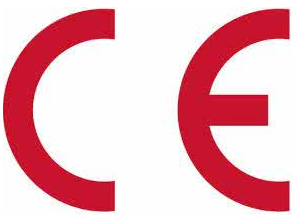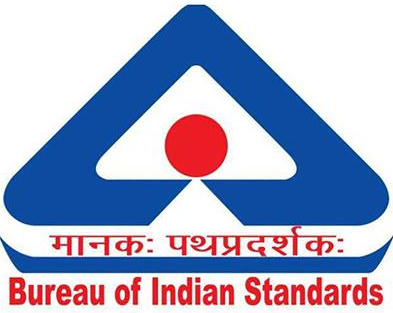

-
ECE R128 欧洲车用LED灯泡E/mark标......
2024-05-08
-
2024-05-08
-
2024-05-08
-
2024-04-08
-
2024-03-14
-
2024-03-14
a) After market (radio) equipment (and ancillary equipment) intended for installation in a motor vehicle, and which are not related to immunity related functions (annex I, clause 2.1.12 of the Directive) of the motor vehicle.
b) After market (radio) equipment (and ancillary equipment) intended for installation in a motor vehicle , and which are related to immunity related functions (annex I, clause 2.1.12) of the motor vehicle, are subject to type approval requirements of the Directive 2004/104/EC [i.8].
Electromagnetic compatibility and
Radio spectrum Matters (ERM); ElectroMagnetic Compatibility (EMC)
standard for radio equipment and services;
Part 1: Common technical requirements
Intellectual Property Rights 知识产权
IPRs essential or potentially essential to the present document may have been declared to ETSI. The information pertaining to these essential IPRs, if any, is publicly available for ETSI members and non-members, and can be found in ETSI SR 000 314: "Intellectual Property Rights (IPRs); Essential, or potentially Essential, IPRs notified to ETSI in respect of ETSI standards", which is available from the ETSI Secretariat. Latest updates are available on the ETSI Web server (http://ipr.etsi.org). Pursuant to the ETSI IPR Policy, no investigation, including IPR searches, has been carried out by ETSI. No guarantee can be given as to the existence of other IPRs not referenced in ETSI SR 000 314 (or the updates on the ETSI Web server) which are, or may be, or may become, essential to the present document.
Foreword
This Harmonized European Standard (EN) has been produced by ETSI Technical Committee Electromagnetic compatibility and Radio spectrum Matters (ERM).
The present document has been produced by ETSI in response to a mandate from the European Commission issued under Council Directive 98/34/EC [i.3] (as amended) laying down a procedure for the provision of information in the field of technical standards and regulations.
The present document is intended to become a Harmonized Standard, the reference of which will be published in the Official Journal of the European Communities referencing the Council Directive on the approximation of the laws of the Member States relating to electromagnetic compatibility ("the EMC Directive") (2004/108/EC [i.2] as amended) and Directive 1999/5/EC [i.1] of the European Parliament and of the Council of 9 March 1999 on radio equipment and telecommunications terminal equipment and the mutual recognition of their conformity ("the R&TTE Directive").
The requirements relevant to the EMC Directive [i.3] and the R&TTE Directive [i.1] are summarised in annex A.
The present document is based upon the Generic Standards EN 61000-6-3 [i.4] and EN 61000-6-1 [i.5] and other standards, where appropriate, to meet the essential requirements of Council Directives 2004/108/EC [i.2], 1999/5/EC [i.1] and the motor vehicle EMC Directive 2004/104/EC [i.8] respectively.
The motor vehicle EMC Directive 2004/104/EC [i.8], is a type approval Directive, and contains in its annexes, all the technical requirements necessary to demonstrate conformance. There are two categories of after market equipment covered by the Directive as follows:
a) After market (radio) equipment (and ancillary equipment) intended for installation in a motor vehicle, and which are not related to immunity related functions (annex I, clause 2.1.12 of the Directive) of the motor vehicle.
b) After market (radio) equipment (and ancillary equipment) intended for installation in a motor vehicle , and which are related to immunity related functions (annex I, clause 2.1.12) of the motor vehicle, are subject to type approval requirements of the Directive 2004/104/EC [i.8].
The present document only deals with equipment of category a) subject to the requirements set out below.
Annex I, clause 3.2.9 of 2004/104/EC [i.8], sets out the acceptance of conformity according to the procedures of 2004/108/EC [i.2] or 1999/5/EC [i.1] for after market equipment (ESAs) not related to immunity related functions of the motor vehicle (annex I, clause 2.1.12), but additionally requires that the ESA fulfils the limits defined in annex I, clauses 6.5, 6.6, 6.8, and 6.9 of the Directive. Requirements applicable to this type of after market equipment (ESAs) are set out in annex B of the present document.
The present document, and the product related parts of it are based on the current EMC standards published by ETSI. It should be noted that the majority of these EMC standards have also been published in the Official Journal of the European Union.
The present document is part 1 of a multi-part EMC standard for radio equipment which is structured in the following way:
• One EMC standard for all radio equipment made up of several parts. • All common technical requirements for EMC emission and immunity have been placed in the common part, which is the present document.
• Separate parts have been developed to cover specific product related radio equipment test conditions, test arrangements, performance assessment, performance criteria, etc.
• A clause is included in each of the specific radio parts, entitled "special conditions", which is used as appropriate to cover any deviations or additions to the common requirements set out in the present document.
To demonstrate an adequate level of EMC protection, the present document is to be used together with the appropriate specific radio part of the standard.
The present document is part 1 of a multi-part deliverable covering ElectroMagnetic Compatibility (EMC) standard for radio equipment and services, as identified below:
Part 1: "Common technical requirements";
Part 2: "Specific conditions for radio paging equipment";
Part 3: "Specific conditions for Short-Range Devices (SRD) operating on frequencies between 9 kHz and 40 GHz";
Part 4: "Specific conditions for fixed radio links, Broadband Data Transmission System Base stations, ancillary equipment and services";
Part 5: "Specific conditions for Private land Mobile Radio (PMR) and ancillary equipment (speech and non-speech)";
Part 6: "Specific conditions for Digital Enhanced Cordless Telecommunications (DECT) equipment";
Part 7: "Specific conditions for mobile and portable radio and ancillary equipment of digital cellular radio telecommunications systems (GSM and DCS)";
Part 8: "Specific conditions for GSM base stations";
Part 9: "Specific conditions for wireless microphones, similar Radio Frequency (RF) audio link equipment, cordless audio and in-ear monitoring devices";
Part 10: "Specific conditions for First (CT1 and CT1+) and Second Generation Cordless Telephone (CT2) equipment";
Part 11: "Specific conditions for terrestrial sound broadcasting service transmitters";
Part 12: "Specific conditions for Very Small Aperture Terminal, Satellite Interactive Earth Stations operated in the frequency ranges between 4 GHz and 30 GHz in the Fixed Satellite Service (FSS)";
Part 13: "Specific conditions for Citizens' Band (CB) radio and ancillary equipment (speech and non-speech)";
Part 14: "Specific conditions for analogue and digital terrestrial TV broadcasting service transmitters";
Part 15: "Specific conditions for commercially available amateur radio equipment";
Part 16: "Specific conditions for analogue cellular radio communications equipment, mobile and portable";
Part 17: "Specific conditions for Broadband Data Transmission Systems";
Part 18: "Specific conditions for Terrestrial Trunked Radio (TETRA) equipment";
Part 19: "Specific conditions for Receive Only Mobile Earth Stations (ROMES) operating in the 1,5 GHz band providing data communications";
Part 20: "Specific conditions for Mobile Earth Stations (MES) used in the Mobile Satellite Services (MSS)";
Part 22: "Specific conditions for ground based VHF aeronautical mobile and fixed radio equipment";
Part 23: "Specific conditions for IMT-2000 CDMA, Direct Spread (UTRA and E-UTRA)) Base Station (BS) radio, repeater and ancillary equipment";
Part 24: "Specific conditions for IMT-2000 CDMA Direct Spread (UTRA and E-UTRA) for Mobile and portable (UE) radio and ancillary equipment";
Part 25: "Specific conditions for CDMA 1x spread spectrum Mobile Stations and ancillary equipment";
Part 26: "Specific conditions for CDMA 1x spread spectrum Base Stations, repeaters and ancillary equipment";
Part 27: "Specific conditions for Ultra Low Power Active Medical Implants (ULP-AMI) and related peripheral devices (ULP-AMI-P)";
Part 28: "Specific conditions for wireless digital video links";
Part 29: "Specific conditions for Medical Data Service Devices (MEDS) operating in the 401 MHz to 402 MHz and 405 MHz to 406 MHz bands";
Part 31: "Specific conditions for equipment in the 9 kHz to 315 kHz band for Ultra Low Power Active Medical Implants (ULP-AMI) and related peripheral devices (ULP-AMI-P)";
Part 32: "Specific conditions for Ground and Wall Probing Radar applications";
Part 33: "Specific conditions for Ultra Wide Band (UWB) communications devices";
Part 34: "Specific conditions for External Power Supply (EPS) for mobile phones".

1 Scope
The present document contains the common requirements for radio communications equipment and associated ancillary equipment, in respect of ElectroMagnetic Compatibility (EMC).
Product dependent arrangements necessary to perform the EMC tests on dedicated types of radio communications equipment, and the assessment of test results, are detailed in the appropriate product related parts of EN 301 489 series [i.13].
The present document, together with the product related part, specifies the applicable EMC tests, the methods of measurement, the limits and the performance criteria for radio equipment and associated ancillary equipment. In case of differences (for instance concerning special conditions, definitions, abbreviations) between part 1 of EN 301 489 series [i.13] and the relevant product related part of EN 301 489 series [i.13], the product related part takes precedence.
Technical specifications related to the antenna port of radio equipment and radiated emissions from the enclosure port of radio equipment and combinations of radio and associated ancillary equipment are not included in the present document. Such technical specifications are normally found in the relevant product standards for the effective use of the radio spectrum.
The environment classification used in the present document refers to the environment classification used in:
• EN 61000-6-3 [i.4] and EN 61000-6-1 [i.5] for the residential, commercial and light industrial environment; or
• TR 101 651 [i.6] for the telecommunication centre environment; or
• ISO 7637-2 [8] for the vehicular environment.
。。。。。。。
如果你需要完整版阅读,请先打赏9.9元  + 微信号
+ 微信号 共享。
共享。
-
2022-09-16
-
新加坡HSA---未注册的医疗器械如何参加新加坡展......
2022-09-16
-
2022-09-07
-
2022-09-03
-
2022-01-13
-
2022-01-07

























